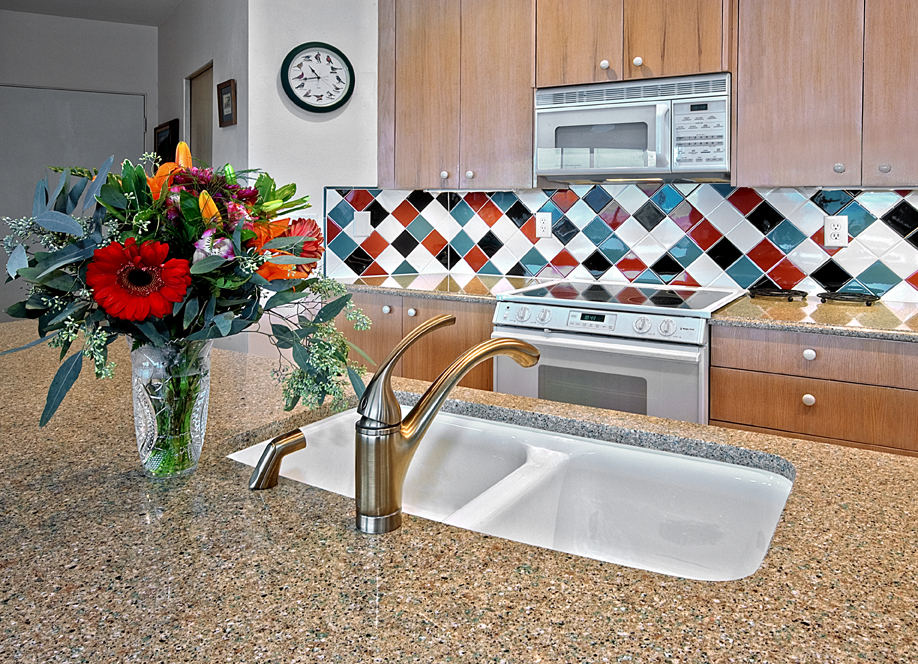Possibly the single hardest working element of any kitchen (after Mom, that is) is the kitchen sink.
The sink gets used in nearly every cooking project, and certainly it is an important part of cleaning up after each project. Sooner or later just about everything in the kitchen except the range and the refrigerator is going to wind up in the sink. As important and central to everything that the sink is, the kitchen sink is rarely thought of as a design or decorating element.
For decades there really was not a lot of choice available in kitchen sinks, the only improvement over a pail on the counter was an enameled cast iron sink, then eventually enameled pressed steel. The enamel coating was to keep the metal from rusting, of course, a problem that was largely eliminated as stainless steel became available. Still, other than different colors of enamel, a kitchen sink was just a kitchen sink.

Modern manufacturing is changing that. As solid stone and composite counter tops became popular, the technologies used to create them could also be adapted to making matching sinks. The various composite counter tops and sinks can be very beautiful, and incredibly durable, but not nearly as tough or durable as stone.
Stone sinks come in two basic types, composite and “solid stone”. Composite are similar to regular composite counter tops. They are constructed from stone chips that are embedded in a resin. Stone composites are very durable in comparison to regular composites, but they are very heavy. They are not as durable as solid stone sinks.
The most common stone used for sinks and counter tops is granite. Slate and soapstone are commonly used as well, and they have their own virtues. They are not as durable as granite, and to many people, not as beautiful.
Solid granite sinks are either made from slabs of granite that are shaped into the sides and bottom of the sink, and then the pieces are bonded together. The more beautiful, and understandably more expensive method of constructing a granite sink is to carve it out of a solid piece of rock.
Not only are these one piece sinks incredibly beautiful and durable, each one is unique. Even if they are carved by an electronically controlled CNC machine to exact dimensions, each individual piece of granite will have its own pattern and personality. This is a result of how the crystals within the rock form, as well as the minerals present, as the granite is formed deep within the earth’s crust.
Although a granite sink is beautiful, durable, and unique, there are some considerations the home owner needs to be aware of. First of all, granite is porous, and will need to be sealed occasionally. This is not a difficult job, nor does it need to be done very often, depending on the amount of use your sink sees.
Granite sinks are not cheap. Pressed stainless steel sinks are inexpensive enough to almost be considered disposable. Most granite sinks on the market fall in the $1000 to $2500 range, although $6000 sinks are not unheard of. For this reason and the next, a granite sink is not an investment to last from one remodeling job to the next, a granite sink should be expected to last the life of the house itself.
Finally, granite sinks are as heavy as if they were made from solid stone, which they are! They will not be as simple to install as a “drop in” steel sink. In that case the cabinet must be strong enough to support the weight of the water the sink will hold. With a granite sink, the water may be only a fraction of the weight.
For information on granite sink installation, or any other remodeling questions you have, be sure to contact the professionals at Corvus Construction.
